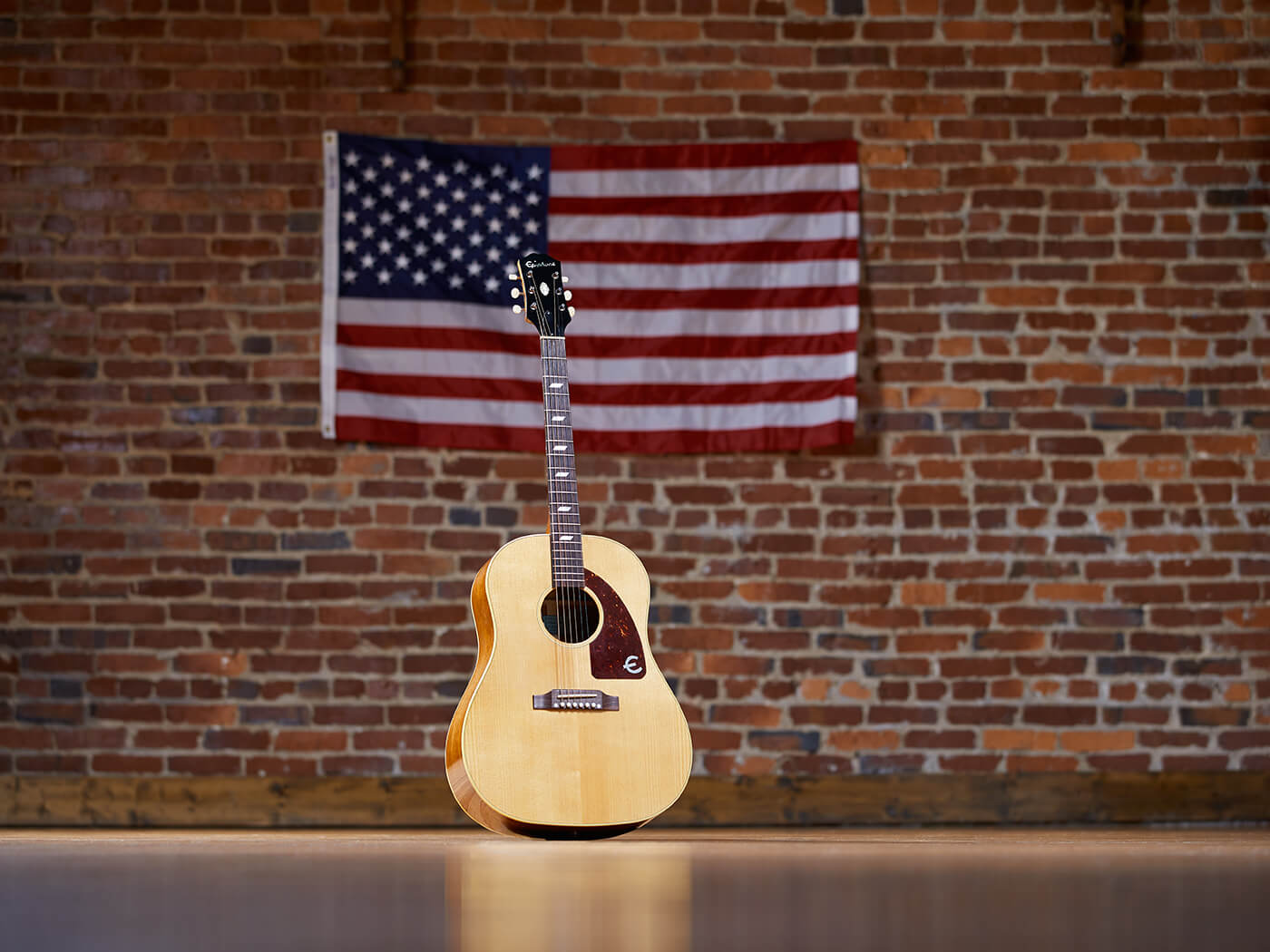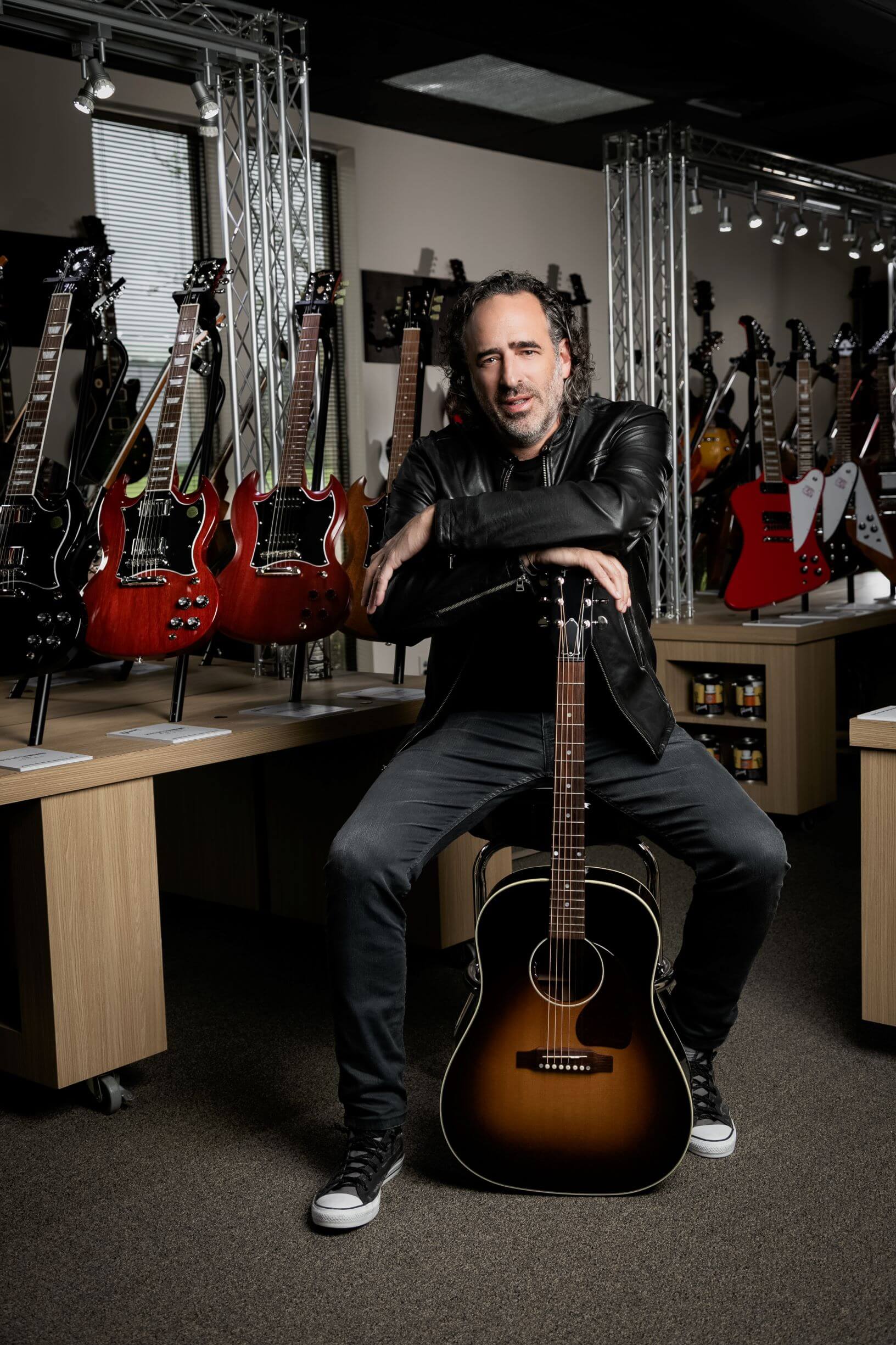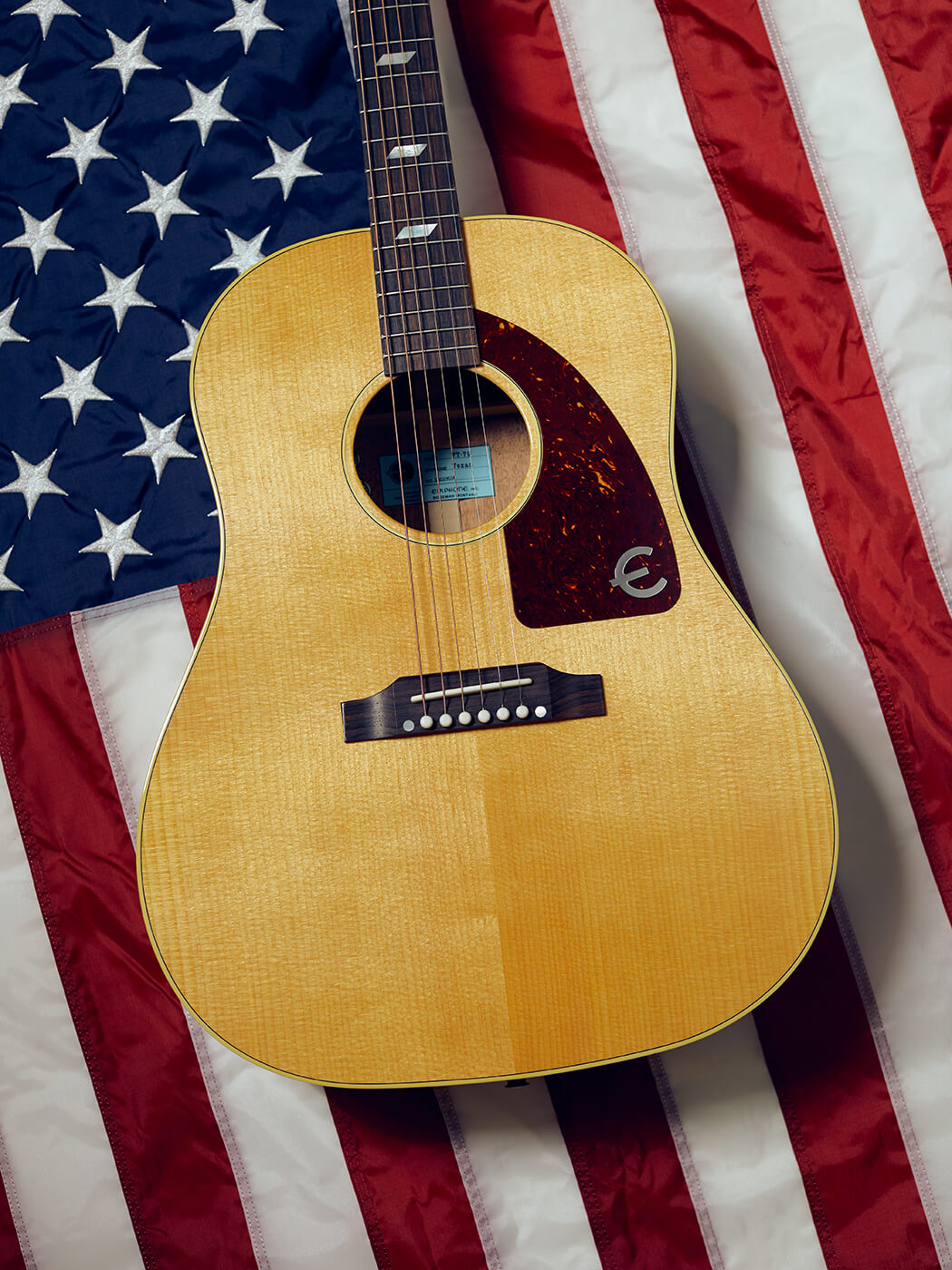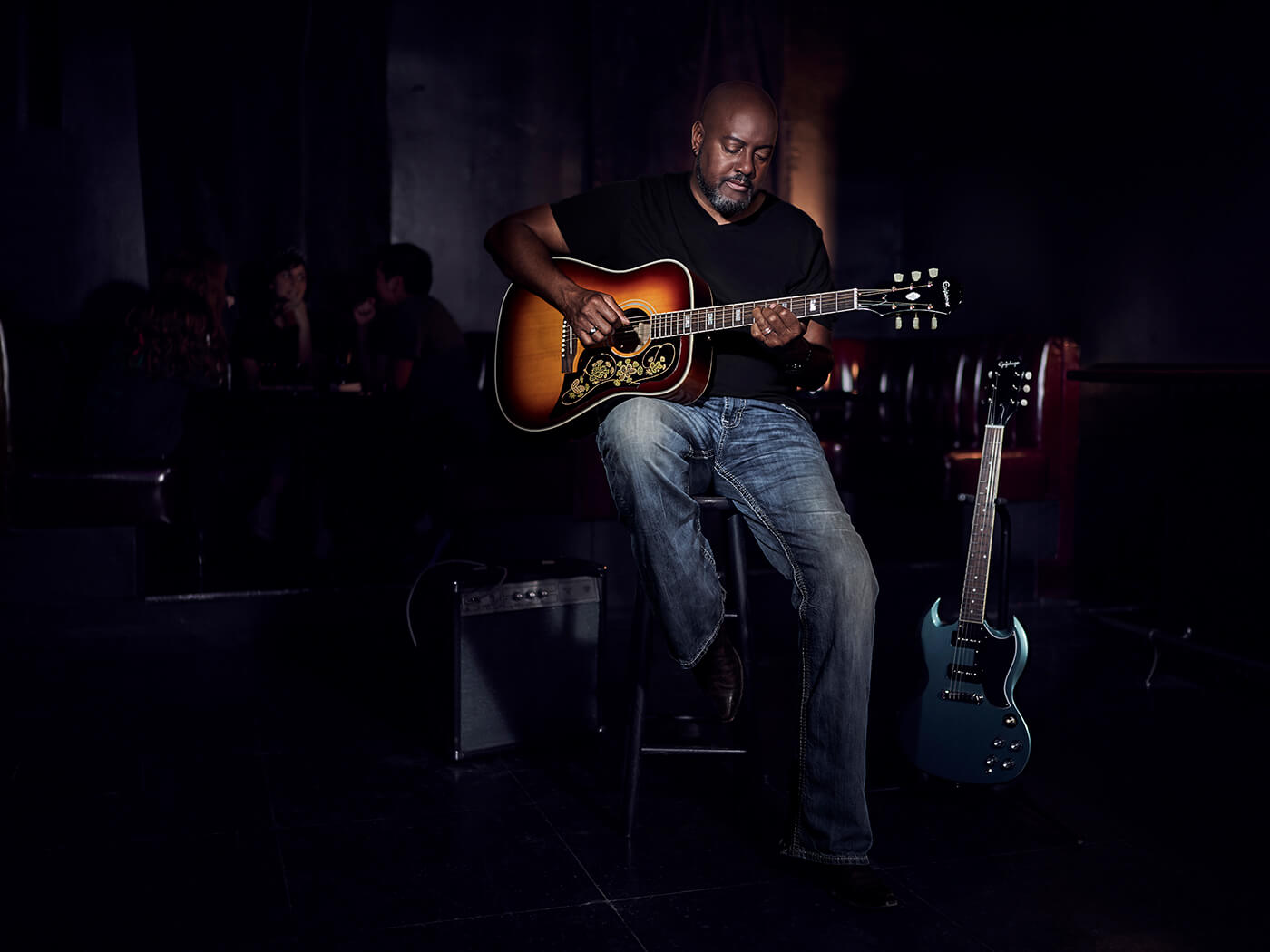Related Tags
Gibson CEO JC Curleigh on getting the Epiphone brand back together
It’s been a long time since you could say that Epiphone caused a buzz at NAMM, but back at January’s show, the overhaul of the brand was all anyone could talk about. We spoke to some of the key people involved about what it all means.

Epiphone Texan Antique Natural
There’s an argument to be made that of all the myriad problems Gibson had before its high-profile bankruptcy in 2018, Epiphone wasn’t one of them. Even when the internet was queuing up to take shots at Gibson for everything from build quality, to design choices and pricing, Epiphone was still selling a hell of a lot of guitars.
And yet, Epiphone guitars never really got a lot of love. Despite a starring role in the jazz era and being one of the most visible and audible guitar brands of the British beat boom, modern-day Epiphones had the reputation of being the guitar you bought because you couldn’t afford a Gibson – and unlike budget offerings from other brands, the headstock design used on most of Epiphone’s Gibson-derived models made sure that even from the back of the room, everyone could see that you weren’t playing the ‘real’ thing.
Epiphone had become known as a stop-off rather than a destination, and this was clearly a perception that Gibson’s new management wanted to change as they began to overhaul the brand for 2020, and to that it looked at its recent success with its core product line.

“Epiphone is synonymous with being very authentic but also being very accessible for people. So, we know we’ve got momentum and energy on the Gibson side, so why wouldn’t we take that energy and bring it to the Inspired by Gibson range?” Gibson CEO JC Curleigh told us, shortly after the new Epiphone range was revealed at NAMM 2020.
It’s a simple plan, but an eminently sensible one – mirror what worked so well with Gibson at NAMM 2019, only at a more affordable price-point with an Epiphone badge on the headstock. This meant creating the ‘Inspired by Gibson’ line, with the Original Collection the home for models with vintage-style finishes and specifications, and the Modern Collection the space for forward-looking innovation.
“I think it’s less about Epiphone shadowing Gibson, and more about what our Epiphone and Gibson fans were saying to us,” counters JC. “Like, ‘Hey, if you’re going to do Originals, really do Originals. Be true to that era and go back to what you did then.’ So that’s what we did with Gibson, and now we’re doing it with the Originals in the Inspired By collection.”
Head boy
The evidence of this desire to really do things right can be found in everything from the neck shapes to the upgraded CTS pots, to the colour choices, and even the brand new Deluxe tuners (designed in collaboration with Gibson Custom), but ultimately that headstock is what’s dominated the conversation about these new guitars – as Gibson knew it would.
“What I’ve really learned to appreciate and love about our fanbase is that they pay attention to detail,” notes JC. “And so when we say ‘Original’, ‘Historic’, ‘Modern’ or ‘Inspired by’, we have to reflect that in the details of our guitars. And by paying attention to the headstock again, and the craftsmanship around that… it all really matters.”
Referring to the new design as the ‘Kalamazoo’ headstock is evocative, of course, and the name was chosen to reflect a pivotal moment in the history of two iconic American brands.
“The Kalamazoo headstock harkens back to Epiphone being acquired by Gibson in 1957,” says Aljon Go, Epiphone’s Product Manager. “After that, both Gibson and Epiphone guitars were made side-by-side in Kalamazoo, Michigan. This early-60s headstock with the ‘open book’ has actually been used on our Wildkat guitar for many years, but with the badge – so it’s been out there, people just never knew!”
Another interesting wrinkle in the Epiphone relaunch is the fact that the company is making production guitars in the USA again for the first time in decades – exemplified first by the brand new USA Texan. This is the flipside of what’s being done to make the affordable Chinese-made guitars more attractive – a reminder that Epiphone is a brand with its own rich history and musical prestige, far beyond the budget brand that it has become known as today.
“I actually love the notion of the Texan being made in the USA – there’s just so much heritage and history there,” JC enthuses. “Whether it’s Peter Frampton or Paul McCartney, it’s just amazing. I think we’re in that position now with Epiphone where it is one of the most authentic brands out there, so we have to ensure that we’re true to that promise. So if you’re going to invest in the guitar that Paul McCartney wrote Yesterday on, in the Texan, expect for it to be at that price point and quality.

“I grew up in a musical family, and my mother always played Epiphone, so that’s been in our house all my life,” the CEO reveals. “So to me, Epiphone has always been synonymous with engaging in music. So combining the quality, build and craftsmanship, with what we can do to inspire it from the Gibson side, is the perfect combination.”
More information at epiphone.com.



